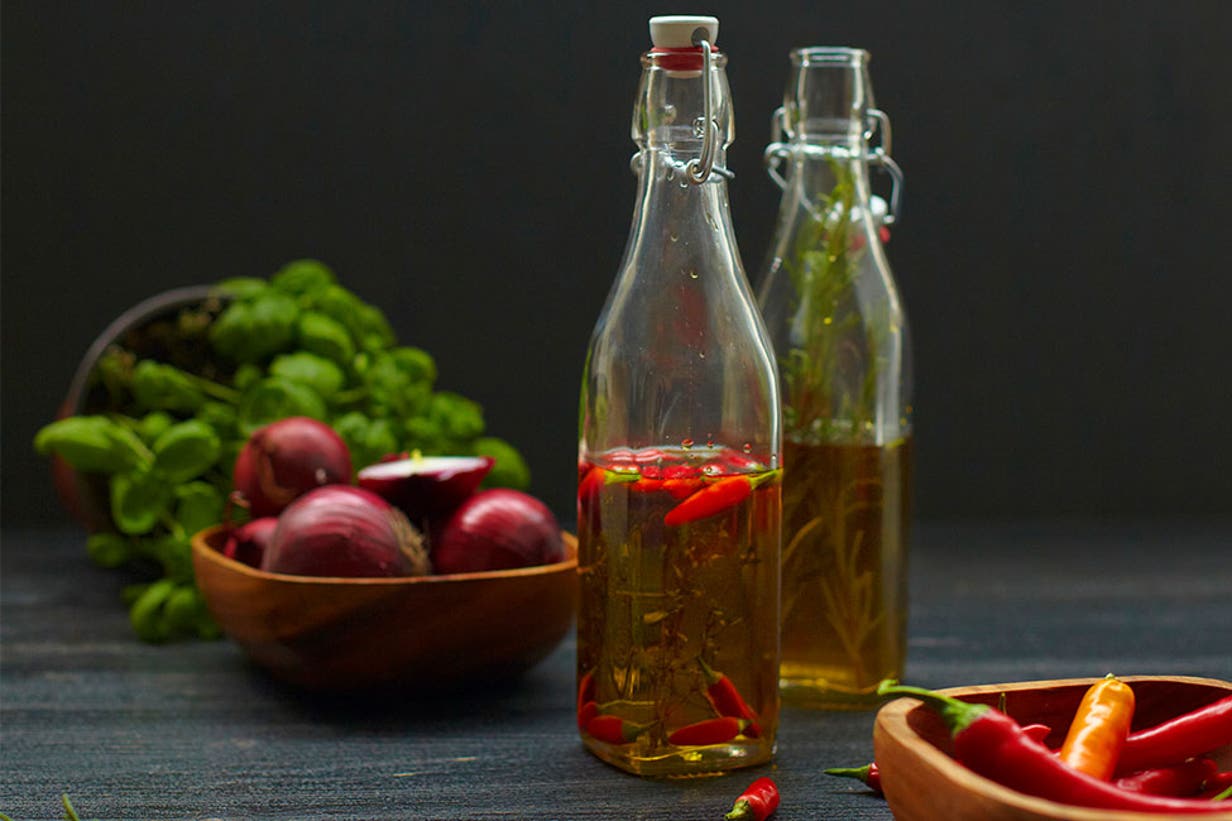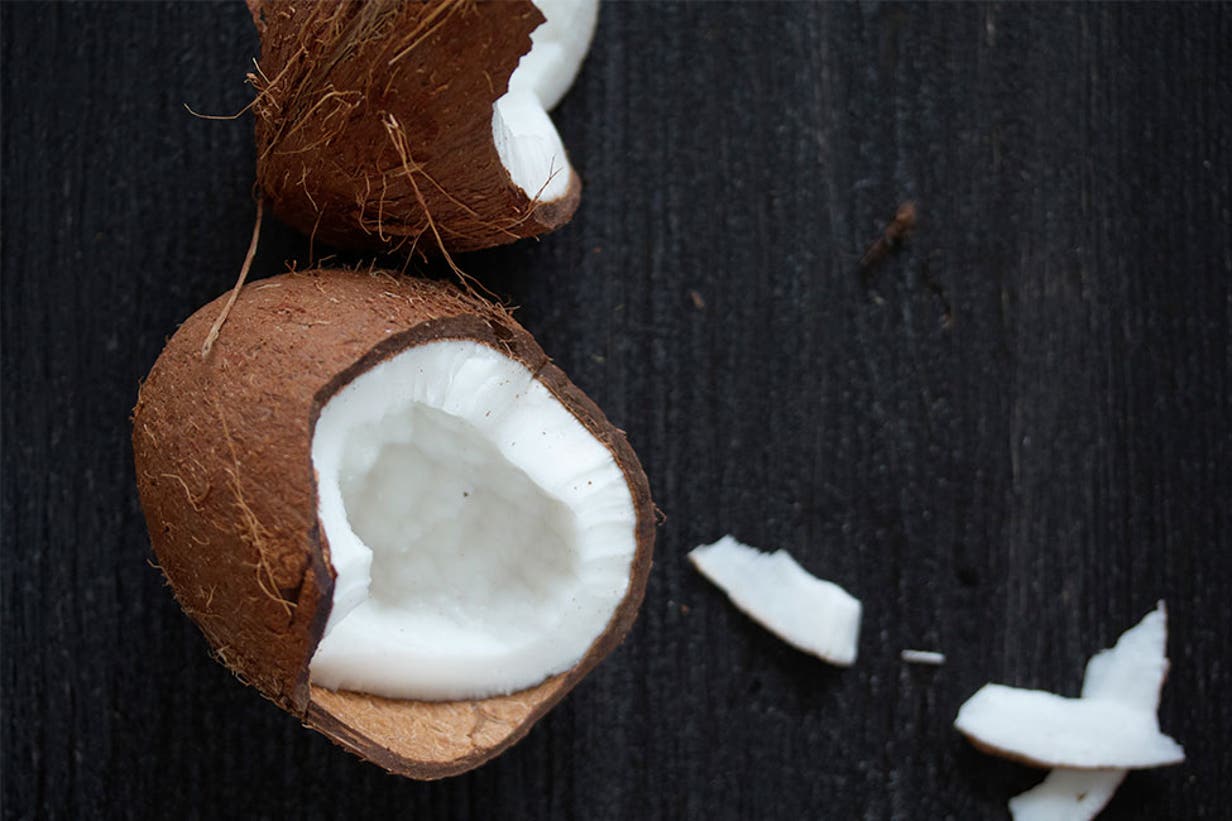Rapeseed, coconut, pumpkin or linseed: The list could go on forever. Olive oil is no longer the only vegetable oil used for cooking. As the variety in our kitchen grows, so does our curiosity. Is it better to use olive oil or rapeseed oil for frying? Which oil is best used in salad dressing? And which oil is actually the healthiest?
Sound pretty complicated? Here’s an overview of four oils and how to use them best in your kitchen.
Rapeseed oil
Rapeseed oil deserves a gold medal in the kitchen. And not just for the blinding shine that come from it’s fields.
Good quality rapeseed oil is rich in vitamin E and contains many antioxidants, which protect our cells from damage and keep us young. The high omega 3 fatty acid content also makes rapeseed oil extremely valuable for our nourishment.
Cold-pressed rapeseed oil is ideal for salad dressing or marinades. Rapeseed oil is also a highlight for many dips due to its nutty taste, similar to that of mustard.
High temperatures will quickly make the oil turn rancid. So it’s best not used for frying! Refined rapeseed oil is better suited for this. It’s more heat-resistant, but loses taste and vitamins through the refinement process.
Good to know: Only the refined oils have a yellow color. You can recognize cold-pressed oils by their green color.
Olive oil
Tomato-mozzarella salad without olive oil: not possible. Olive oil is the pearl of Italy. It’s a vital ingredient of the mediterranean diet and the oil of choice according to Italians.
Just like rapeseed oil, olive oil has a high vitamin E content, which belongs to the liposoluble vitamins and is therefore absorbed particularly well by the body in connection with fat. Furthermore, it simply contains a lot of unsaturated fatty acids and little cholesterol, which in turn has a good effect on our blood lipid levels.

Olive oil can be divided into different quality classes. Extra virgin and virgin olive oil are cold-pressed. They contain the most vitamins and ingredients and have the most intense flavor. The oils that are only labeled as “olive oil” often contain a mixture of refined and pressed oils. Fruity, spicy, bitter, mild… Depending on the taste, olive oil can refine salads and different dishes or be used for baking.
Take note: Olive oil is not particularly heat-resistant and should therefore not be heated above 180° Celsius. This may create undesired trans fats, which do the opposite of the good properties of olive oil.
Linseed oil
Linseed oil is a real powerhouse. Particularly rich in essential omega 3 fatty acids, it has positive effects on our heart and circulatory system. With a content of around 70 percent, linseed oil outshines even oils like rapeseed oil, which is seen as being particularly rich in omega 3.
The high content of multiple unsaturated fatty acids makes linseed oil particularly delicate, because these are unstable when in contact with oxygen. Linseed oil oxidizes quickly, loses its taste and turns bitter. That is why it’s important to seal linseed oil air tight after usage. It is best to only buy small amounts and to make sure that the bottle is stored in a cool and dark place. Then you are guaranteed the full, nutty, slightly hay-like flavor. Linseed oil tastes particularly delicious in curd dishes. Combine with sweet fruits or a hearty dish. The classic dish with linseed oil is curd, potatoes and herbs.
Coconut oil
Coconut oil is a true all-rounder. Extracted from the dried flesh of the coconut, it consists about 90 percent of saturated fatty acids.

The oil is best for frying and boiling in the kitchen, because the healthy properties remain even with high temperatures. However, coconut oil doesn’t just taste good. It’s a great beauty product, that makes your skin and hair smooth and can be used as a cleaning product due to its liposoluble properties.
Good to know: The more saturated fatty acids an oil has, the better it is for frying.
Regardless of the oil you use. Pay attention to quality and correct storage. This is the only way you can be sure that the ingredients are included and stay this way. Want to try out a certain oil, but don’t know the best way to use it? You can find a lot of recipes in our nutrition guide! Take a look and let us inspire you.